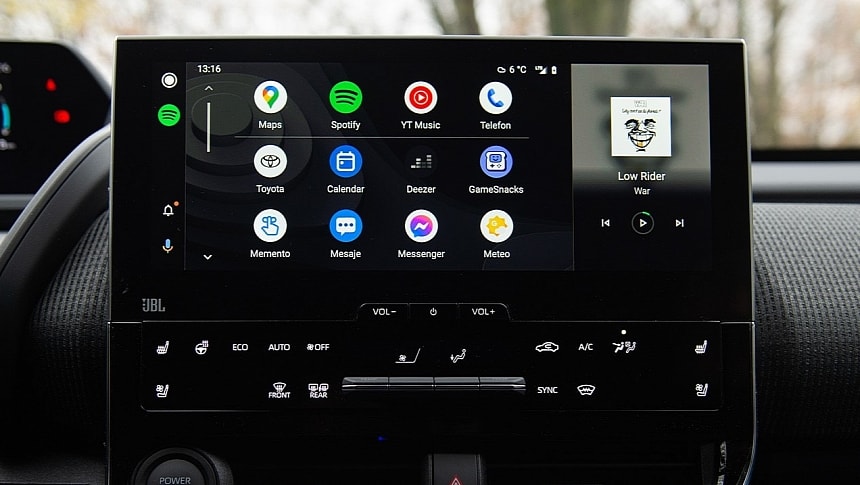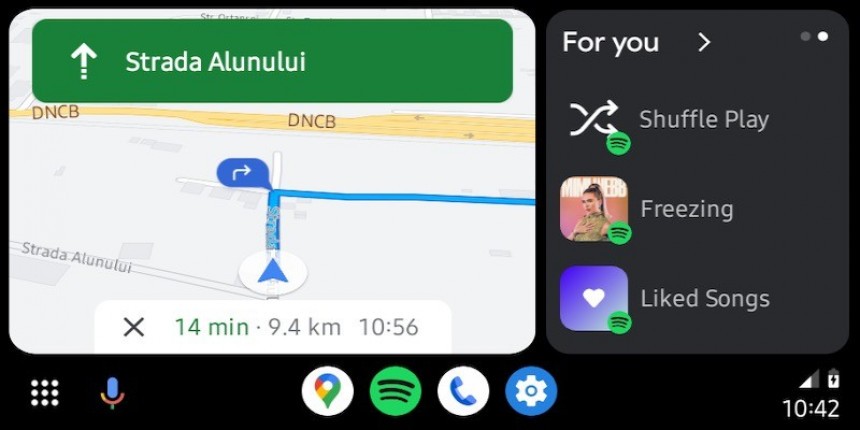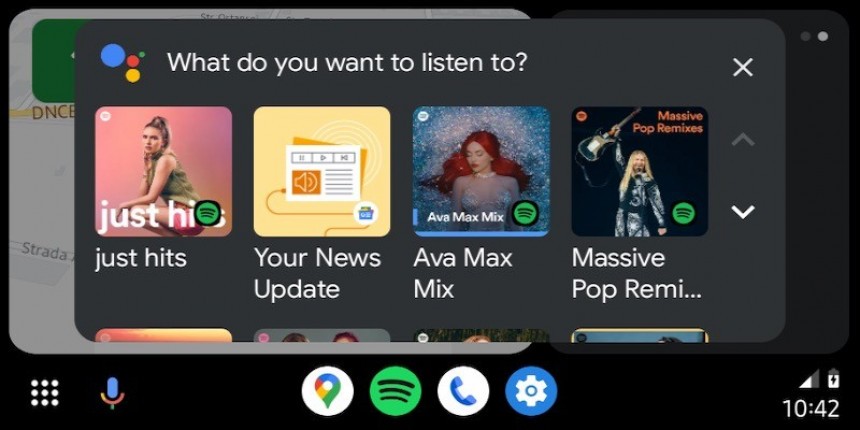Google sees the Android Auto adoption numbers going through the roof, with the company claiming the in-car experience is already available in over 200 million vehicles.
The growing adoption is no surprise. Despite GM's attempt to start a trend, customers love Android Auto and CarPlay. It's why many carmakers, including Honda and Ford, rushed to confirm their commitment to offering these systems in their cars, regardless of what their rivals decide to do.
Android Auto is currently available in wired and wireless configurations, depending on the type of support each carmaker offers. Some models come with both connections, letting drivers choose whether to use wired or wireless.
The latter has obvious benefits, as you don't need to plug in when you start the engine. Android Auto connects automatically, even if you keep the smartphone in your pocket or backpack.
Converting a wired Android Auto connection into a wireless one has become more convenient thanks to wireless adapters typically selling for less than $100. AAWireless pioneered the product category, while Motorola's MA1 helped expand it, giving customers more wireless Android Auto upgrade options.
The market now includes a myriad of devices, some coming from generic Chinese brands offering more affordable models. Such a device goes as low as $20, so if you're comfortable with the lack of long-term updates and support, they're probably worth a chance.
However, the number of options available for users who want to upgrade Android Auto wired to wireless keeps growing.
Software documented and maintained on GitHub allows anyone to convert a Raspberry Pi into an Android Auto wireless adapter in a few easy steps.
The project is called AAWirelessDongle and has no special requirements other than a Raspberry Pi with USB OTG or gadget mode. You'll also need Wi-Fi and Bluetooth, which is a no-brainer, considering you're supposed to run Android Auto without a cable. External adapters are also supported if the wireless connections are not available built-in.
Once you successfully install the project (you can find all instructions on the GitHub page), you should be able to run Android Auto wireless natively without a mobile companion app. The developer says the boot should be completed in approximately 30 seconds, so if Android Auto doesn't start right away after turning on the engine, give it some time (especially during the initial launch).
The repository allows you to generate an SD card for your Raspberry Pi to convert the board into an Android Auto wireless dongle, with the whole process only taking a few minutes.
Theoretically, an Android Auto wireless adapter is the more convenient choice for less tech-savvy people. They provide a plug-and-play experience, as you only need to connect the device to the car, pair it with your phone, and start using Android Auto without a cable.
The Raspberry Pi version is mostly aimed at more tech-savvy people, but you wouldn't get a Raspberry Pi if you weren't a tech-savvy person in the first place.
While Android Auto wireless comes with obvious benefits, it has its shortcomings, too. The most notable is the battery impact, as a wireless connection has a bigger impact on your battery life than a wired connection (which also charges your phone, albeit slowly).
I've been using Android Auto wirelessly in my car for over a year, and the battery drop is substantial, especially during long trips. However, I also keep a cable around to charge my phone, with the big benefit coming down to the charging method. You can either charge your phone wirelessly (using a third-party adapter or an integrated charger if your vehicle sports wireless charging support) or with a cable. If you use a cable, you can connect the phone to the car's USB port or use a dedicated cigarette socket charger that typically delivers faster speeds.
Compared to a wired connection, you benefit from faster charging with Android Auto wireless, especially because you can choose how to charge the device. Eventually, you could still end up using a cable behind the wheel despite Android Auto running wirelessly.
The most expensive method of getting Android Auto wireless in the car is with a head unit upgrade. Companies like Sony and Pioneer offer premium aftermarket receivers compatible with most vehicles on the road. However, depending on the feature lineup and the touch panel size, you could spend over $1K on an Android Auto-capable head unit, though most models don't cost more than $500. If your car doesn't have Android Auto at all, you can still get the system with a head unit upgrade by installing a compatible model. A basic device with Android Auto wired should cost around $200, though Chinese brands also offer more affordable versions carrying $100 price tags (albeit with questionable quality and no guarantee of long-term support and updates).
Android Auto is currently available in wired and wireless configurations, depending on the type of support each carmaker offers. Some models come with both connections, letting drivers choose whether to use wired or wireless.
The latter has obvious benefits, as you don't need to plug in when you start the engine. Android Auto connects automatically, even if you keep the smartphone in your pocket or backpack.
Android Auto wired to wireless
The market now includes a myriad of devices, some coming from generic Chinese brands offering more affordable models. Such a device goes as low as $20, so if you're comfortable with the lack of long-term updates and support, they're probably worth a chance.
However, the number of options available for users who want to upgrade Android Auto wired to wireless keeps growing.
Raspberry Pi "adapter"
The project is called AAWirelessDongle and has no special requirements other than a Raspberry Pi with USB OTG or gadget mode. You'll also need Wi-Fi and Bluetooth, which is a no-brainer, considering you're supposed to run Android Auto without a cable. External adapters are also supported if the wireless connections are not available built-in.
Once you successfully install the project (you can find all instructions on the GitHub page), you should be able to run Android Auto wireless natively without a mobile companion app. The developer says the boot should be completed in approximately 30 seconds, so if Android Auto doesn't start right away after turning on the engine, give it some time (especially during the initial launch).
The repository allows you to generate an SD card for your Raspberry Pi to convert the board into an Android Auto wireless dongle, with the whole process only taking a few minutes.
The cheaper version
The Raspberry Pi version is mostly aimed at more tech-savvy people, but you wouldn't get a Raspberry Pi if you weren't a tech-savvy person in the first place.
While Android Auto wireless comes with obvious benefits, it has its shortcomings, too. The most notable is the battery impact, as a wireless connection has a bigger impact on your battery life than a wired connection (which also charges your phone, albeit slowly).
I've been using Android Auto wirelessly in my car for over a year, and the battery drop is substantial, especially during long trips. However, I also keep a cable around to charge my phone, with the big benefit coming down to the charging method. You can either charge your phone wirelessly (using a third-party adapter or an integrated charger if your vehicle sports wireless charging support) or with a cable. If you use a cable, you can connect the phone to the car's USB port or use a dedicated cigarette socket charger that typically delivers faster speeds.
Compared to a wired connection, you benefit from faster charging with Android Auto wireless, especially because you can choose how to charge the device. Eventually, you could still end up using a cable behind the wheel despite Android Auto running wirelessly.
The most expensive method of getting Android Auto wireless in the car is with a head unit upgrade. Companies like Sony and Pioneer offer premium aftermarket receivers compatible with most vehicles on the road. However, depending on the feature lineup and the touch panel size, you could spend over $1K on an Android Auto-capable head unit, though most models don't cost more than $500. If your car doesn't have Android Auto at all, you can still get the system with a head unit upgrade by installing a compatible model. A basic device with Android Auto wired should cost around $200, though Chinese brands also offer more affordable versions carrying $100 price tags (albeit with questionable quality and no guarantee of long-term support and updates).


















